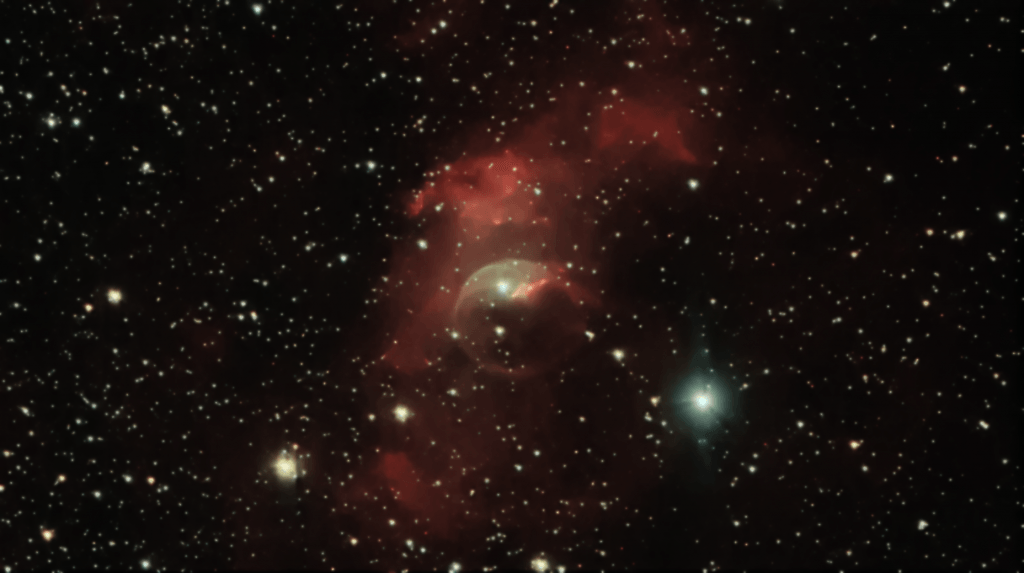This is my astrophotograph of the Bubble Nebula (NGC 7635) near the constellation Cassiopeia. A massive hot star (BD+60°2522) lies above the bubble’s center, which is several hundred thousand times more luminous and 45 times more massive than our Sun. This star’s fierce stellar wind and intense radiation that has blasted out the bubble from a surrounding molecular cloud, creating a structure that is 7 light-years in diameter and 7100 light-years away
This is only my second image using my new Explore Scientific ED 102 mm apo f/7 refractor, and is the first where I’ve tried to pull out faint background nebulosity without blowing out the stars. You can see some strange optical artefacts on the brighter stars: 120 degree spaced shadows in addition to vertical diffraction spikes on the very largest star (I tried to pull these back during post-processing, but they’re still evident). I’m currently in contact with the supplier about these artefacts. Updates will follow in future posts.
Frames
- 64× 200-s light frames (>3.5 hrs of lights)
- 53× dark frames
- 33× flat frames
- 33× dark flat frames
- 106× bias frames
Equipment
- Explore Scientific ED 102 mm apo f/7 refractor
- Sky-Watcher EQ5 PRO SynScan GOTO equatorial mount
- Altair GPCAM3 290C colour camera (with UVIR window fitted)
- Altair 60mm guide scope
- Altair GPCAM2 AR0130 mono guide camera
Software
- SharpCap Pro
- PHD2
- DeepSkyStacker
- Photoshop


